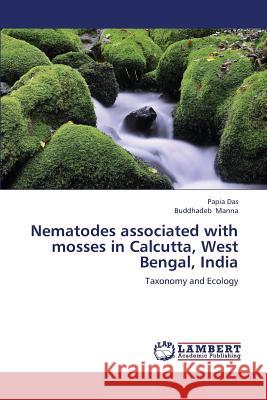Nematodes Associated with Mosses in Calcutta, West Bengal, India » książka
Nematodes Associated with Mosses in Calcutta, West Bengal, India
ISBN-13: 9783659306013 / Angielski / Miękka / 2012 / 444 str.
Mosses, the bryophytes are one of the most important bioindicators and play many complex ecological roles in aquatic and terrestrial ecosystem. Though they are most abundant in moist habitats but can also exploit many different environments from grasslands to deserts. They shelter several microorganisms as diverse as bacteria, protozoan, tardigrades, nematodes etc. in biocoenoses that are relatively isolated from surrounding habitats. But till date comparatively very little study has been carried out on this interesting ecosystem throughout the world including Asian countries, India. Due to insufficient study, very little is known about the moss inhabiting nematodes particularly of India and their roles in this ecosystem. The present study is hoped to throw some light and encourage further research on this aspect. Forty two species of twenty three genera belonging to eight different orders of nematodes had been encountered (16 newly reported) during the present survey. The taxonomic part of this study includes detail morphometrics with their illustrations. Their ecology study includes community analysis, statistical analysis of correlation of nematofauna with abiotic factors.
Mosses, the bryophytes are one of the most important bioindicators and play many complex ecological roles in aquatic and terrestrial ecosystem. Though they are most abundant in moist habitats but can also exploit many different environments from grasslands to deserts. They shelter several microorganisms as diverse as bacteria, protozoan, tardigrades, nematodes etc. in biocoenoses that are relatively isolated from surrounding habitats. But till date comparatively very little study has been carried out on this interesting ecosystem throughout the world including Asian countries, India. Due to insufficient study, very little is known about the moss inhabiting nematodes particularly of India and their roles in this ecosystem. The present study is hoped to throw some light and encourage further research on this aspect. Forty two species of twenty three genera belonging to eight different orders of nematodes had been encountered (16 newly reported) during the present survey. The taxonomic part of this study includes detail morphometrics with their illustrations. Their ecology study includes community analysis, statistical analysis of correlation of nematofauna with abiotic factors.











